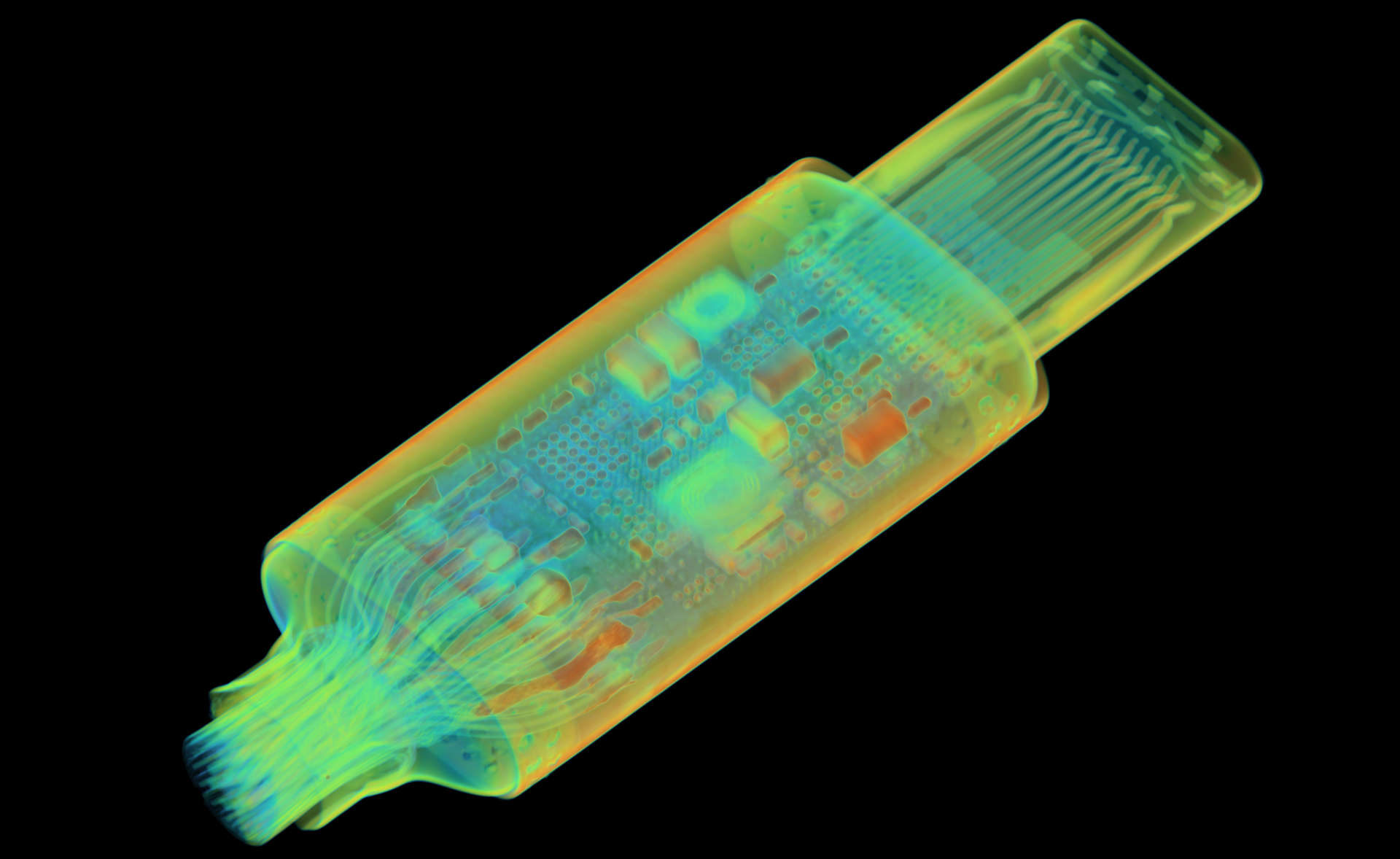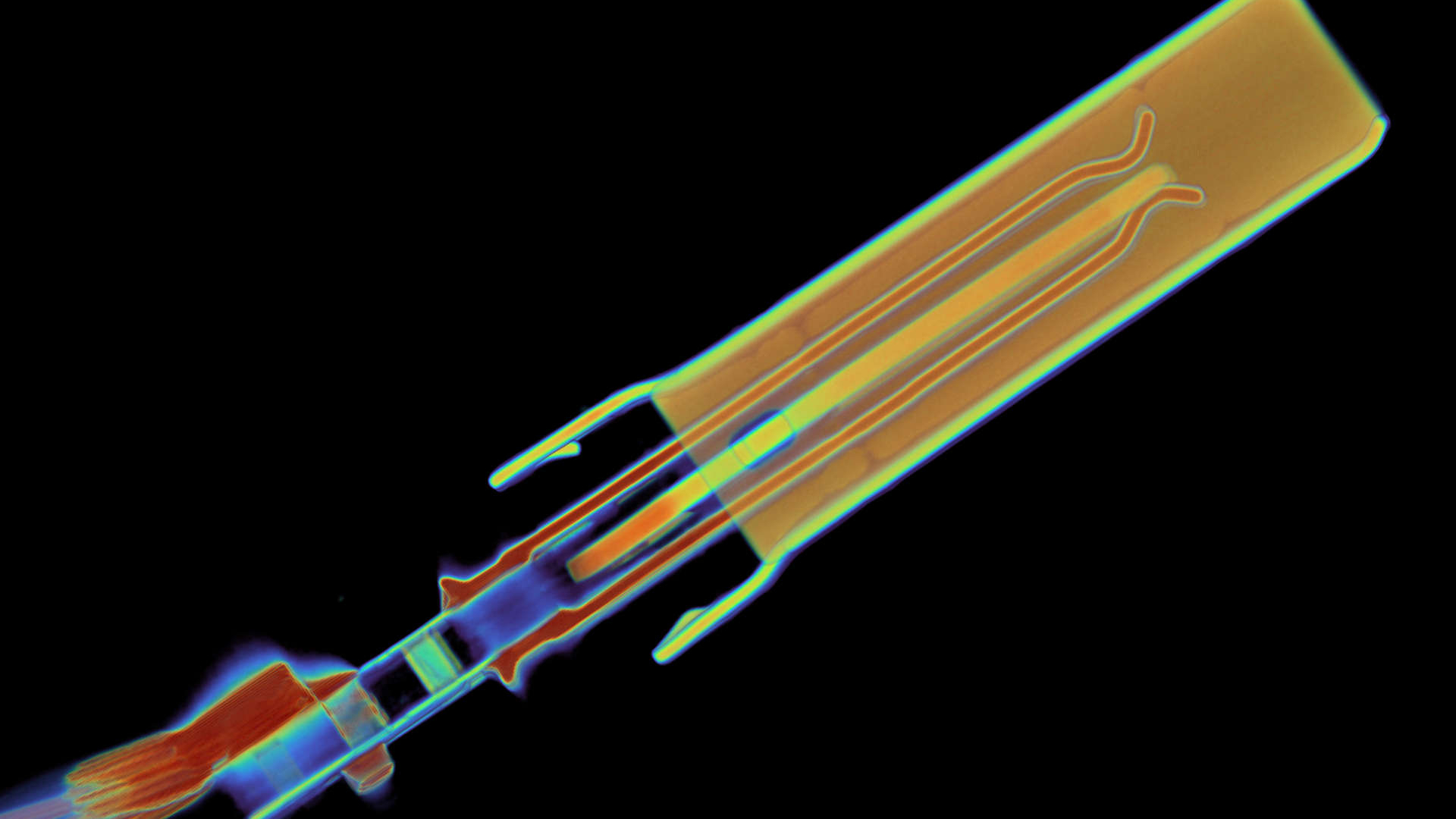Before you judge me for drooling over these gorgeous 3D CT scans of USB cables I implore you to check them out yourself
No prizes for guessing what makes Apple's cables so damn expensive, though.

Ever wondered what the inside of a charging cable is like and what the differences are between a budget brand and a super expensive one? Thanks to some nifty work by industrial CT scanning firm Lumafield, you can stop pondering and start gazing at the cables' insides, all in glorious 3D.
I first noticed Lumafield's work over at Ars Technica but if you head directly to the company's own blog post, you can use its interactive 3D models to peruse the internal structure of four different USB-C cables. Lumafield peeked inside an Apple Thunderbolt 4 Pro cable, plus standard offerings from Amazon Basics, NiceTQ, and Atyfuer.
That first one retails at just under $130 for a six foot (1.8m) cable, whereas the last can be picked up for just a handful of bucks. The results of Lumafield's analysis might surprise you, though, as the cheapest cable was built pretty well.
Apple's cable is as well engineered as you'd imagine (and expect for that price) and it does support a higher charging rate than the others. Those manufacturers cut costs by using fewer pins, less shielding, eschewing a PCB, and so on.
That doesn't mean they're bad cables, of course, they're probably all perfectly fine for what they're rated to do. If you've ever wondered exactly what makes them so cheap, then wonder no more, as you can now see for yourself.

But just look at those gorgeous 3D renders of the scans! You can check out those embedded in Lumafield's article or, by clicking on the appropriate button and waiting for the project to load, you can get a more impressive view of how the different cables are all manufactured that you can twist and turn at will.
Like many of us in the office, I adore images of processing chips, like those created by Fritzchens Fritz, so I'd happily sell a million cookies to see some interactive 3D CT scans of a CPU or GPU. Actually, I'd love to see the same thing for every part of a gaming PC, from RAM sticks to cooling fans, Wi-Fi dongles to motherboard VRMs.
Keep up to date with the most important stories and the best deals, as picked by the PC Gamer team.

Lumafield's scanners look pretty compact and don't need to be hooked up to a high voltage supply, which means I could fit one in my office (maybe). Wonder how long it would take me to save my pennies and buy my own CT scanner?
Best SSD for gaming: The best speedy storage today.
Best NVMe SSD: Compact M.2 drives.
Best external hard drive: Huge capacities for less.
Best external SSD: Plug-in storage upgrades.

Nick, gaming, and computers all first met in 1981, with the love affair starting on a Sinclair ZX81 in kit form and a book on ZX Basic. He ended up becoming a physics and IT teacher, but by the late 1990s decided it was time to cut his teeth writing for a long defunct UK tech site. He went on to do the same at Madonion, helping to write the help files for 3DMark and PCMark. After a short stint working at Beyond3D.com, Nick joined Futuremark (MadOnion rebranded) full-time, as editor-in-chief for its gaming and hardware section, YouGamers. After the site shutdown, he became an engineering and computing lecturer for many years, but missed the writing bug. Cue four years at TechSpot.com and over 100 long articles on anything and everything. He freely admits to being far too obsessed with GPUs and open world grindy RPGs, but who isn't these days?


